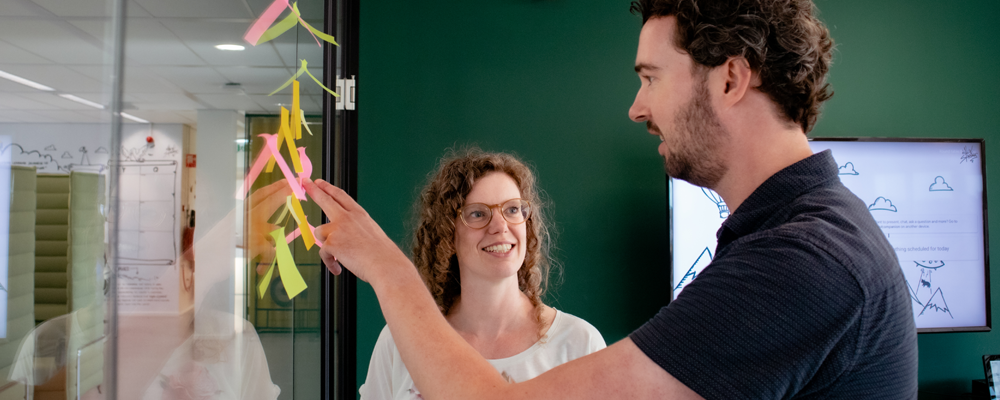Get more from your blended learning journeys

A few weeks ago, I was at an educational consultancy for the launch of their online learning platform. That in itself is nothing special, just like the gist of their story: we want blended. Of course, I hear that a lot, because by now the term has been coined in almost every organisation. Apart from the fact that the term is still ambiguous, the interpretation can also differ.
During this specific meeting, it turned out that the content would mainly come down to some preparatory assignments, a meeting and some homework afterwards. In addition, it was important that there was at least ‘a bit of online in there somewhere’. Although this is an understandable starting point, I would like to challenge everyone to go the extra mile.
Let’s work towards real blends, where each instructional format gets the interpretation it deserves.
First of all, the definition
As I mentioned, definitions of blended learning can be found at various levels.
In 2014, Bernard came up with the following definition: ‘A mix of classroom instruction (for example face-to-face) and online learning outside the classroom where the online work replaces classroom time.’
This fits in nicely with preparation-meeting-homework, where you replace classroom time with online assignments. This keeps the time investment for participants the same and takes the teacher less time.
However, in order to take blended learning to the next level, I would like to propose the following definition: ‘Blended learning is a combination of learning interventions, online and offline, which together provide the most effective and efficient learning solution.’
In my opinion, the big difference lies in abandoning the standard format where classroom time has to be replaced by online work. With learning technology, you now have many more opportunities to expand your repertoire of teaching methods. This allows you to better connect to what you want to achieve.

One step back, two steps forward
A training course often consists of a collection of objectives, which ensure that your participants learn the right skills and/or knowledge. The way in which you address these objectives depends on the best didactic approach to achieve the objective most effectively and efficiently.
In addition, the feasibility and possibilities in the specific context play an important role. With learning technology, you expand those possibilities and can determine - per component, how you can best reach your goal. To start with, it is important to take a step back.
My advice would be to write out your training on post-its in small steps. Where do you start? What is the first activity? And so on. Then you can plot each activity to the appropriate instructional format. Is the activity best suited for online? Offline? Is it best to support the activity with classroom clarification, after which the learners get to work themselves? Which online learning activity is best for which instance?
By asking yourself these questions, you will hopefully see your training in a different light. Also, it will potentially give you an insight into the golden thread running through your training and whether all parts fit together well.
I challenge you…
Select one of your training courses, take a look at your current learning technology and spend an afternoon on it. Look at your current set-up, dissect it and think about the best means to achieve your goal.
Let go of standard conventions; theory does not always have to be taught via PowerPoint in the classroom or digitally ahead of time. In this way we are moving towards an optimal application of learning technology in combination with offline instances.
